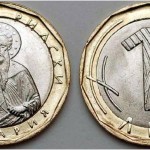Gold retained overnight gains and hovered near Mondays four-week high after fears of a global economic slowdown sent Japanese stocks falling to the lowest in two months, stoking safe haven demand. Assets in the SPDR Gold Trust saw their first inflow in five weeks. Silver, platinum and palladium also rose.
Comex gold futures for settlement in December traded at $1 233.0 per troy ounce at 8:37 GMT, up 0.24% on the day. Prices ranged between $1 237.5, close to Mondays four-week high of $1 238.0, and $1 232.5. The precious metal added 0.7% yesterday to close at $1 230.0, the highest since September 17th.
Gold extended last weeks 2.4% advance as fears over a cooling global economy sent equities falling, prompting heightened interest for save-havens such as bonds, the Japanese yen and the precious metal. The US dollar gained ground on Tuesday against the euro following mostly downbeat inflation data from the Eurozone, coupled with expectations for a drop in consumer sentiment in Germany in October, as well as in the single-currency bloc as a whole.
The US dollar index, a gauge of the greenbacks performance against a basket of six trading partners, ended a 12-week bull run on Friday. The December contract settled 0.44% higher on Friday at 86.031, but closed the week 0.9% lower. It fell 0.35% to 85.727 on Monday and was down 0.08% at $85.660 on Tuesday at 8:37 GMT.
The US dollar index retreated from a four-year high touched on October 3rd after Fed minutes from the central bank’s September 16-17 meeting revealed last week that policy makers feared slowing global growth and a strong dollar posed risks to the US economy’s recovery. Central bankers decided to maintain a pledge to keep interest rates at rock bottom for a “considerable time”.
“Some participants saw the current forward guidance as appropriate in light of risk-management considerations, which suggested that it would be prudent to err on the side of patience while awaiting further evidence of sustained progress toward the committee’s goals,” Fed minutes showed.
The International Monetary Fund last week trimmed its global economic growth forecast to 3.8% next year, down from the previously expected in July 4.0%.
Federal Reserve Vice Chairman Stanley Fischer said on October 11th that weaker-than-expected global growth could force the Fed to remove accommodation slower than otherwise. He said that the central bank won’t raise interest rates until the US economic growth has advanced sufficiently and emerging markets could digest the interest rate hike. An extended period of rock-bottom interest rates would benefit gold as a non-interest-bearing asset, while pushing the dollar down.
Assets in the SPDR Gold Trust, the biggest bullion-backed ETF and a major gauge of investor sentiment towards the metal, rose by 1.79 tons to 761.23 tons on Monday, rebounding from the lowest since December 2008. This was the funds first inflow since September 10th.
Danny Laidler, head of the ETF Securities Australia & New Zealand operations, said for CNBC: “Our gold exchange-traded products saw their first inflows in a month as dovish Federal Open Market Committee minutes led to dollar weakness, while weak German data renewed interest in the hard defensive assets. Last weeks bounce could trigger a short-covering rally helping to sustain momentum in the upward trend.”
Elsewhere on the precious metals market, platinum for delivery in January rose by 1.06% to $1 274.6 an ounce by 8:37 GMT, while palladium December futures added 0.90% to trade at $793.00. Silver for delivery in December was up 0.81% at $17.485 per troy ounce.
Pivot support and resistance levels
According to Binary Tribune’s daily analysis, December gold’s central pivot point on the COMEX stands at $1 230.5. Having already touched the first resistance level at $1 237.5, the contracts next barrier will be at $1 244.9. In case the second key resistance is broken, the precious metal may attempt to advance to $1 251.9.
If the contract manages to breach the first key support at $1 223.1, it may come to test $1 216.1. With this second key support broken, movement to the downside may extend to $1 208.7.
In weekly terms, the central pivot point stands at $1 219.6. The resistance levels are as follows: R1 – $1 236.1, R2 – $1 250.6, R3 – $1 267.1, while support will be encountered at respectively S1 – $1 205.1, S2 – $1 188.6 and S3 – $1 174.1.





